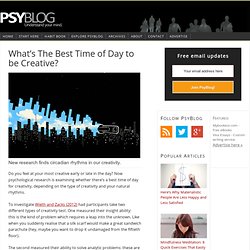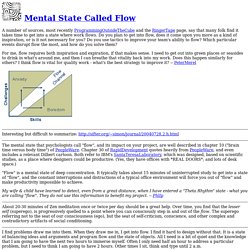

3 Barriers to Creativity. Here’s a scenario we’ve all been in far too many times to count: it’s late, you’ve been asked by a superior to come up with some ideas to help kick start product sales. How do you pull it off? We’ve all suffered from creativity barriers. Today, I’d like offer up three of the largest creativity barriers and how to smash them courtesy of Luke Williams’ post from Fast Co Design. 3 Problems to Creativity 1. This feeling of being adrift, overwhelmed and lacking direction can come as a result of an unguided brainstorming session. 2.
It’s no secret that to be successful today you have to view the world in terms of a holistic hybrid of product, service, and information. 3. You can talk about ideas in general terms, at least for a while. How to Crush these Roadblocks 1. After you’ve identified an opportunity, start to break it down into a number of parts and examine each one. According to Williams, an opportunity consists of three parts: an opportunity to provide [who?] 2. 3. Related. What’s The Best Time of Day to be Creative? New research finds circadian rhythms in our creativity.

Do you feel at your most creative early or late in the day? Now psychological research is examining whether there’s a best time of day for creativity, depending on the type of creativity and your natural rhythms. To investigate Wieth and Zacks (2012) had participants take two different types of creativity test.
One measured their insight ability: this is the kind of problem which requires a leap into the unknown. Like when you suddenly realise that a silk scarf would make a great sandwich parachute (hey, maybe you want to drop it undamaged from the fiftieth floor). The second measured their ability to solve analytic problems: these are the type of problems that require you to work steadily towards the answer, like doing your taxes. Both of these types of thinking are important in creativity, although at different points in the process.
Image credit: Yau Hoong Tang. Mental State Called Flow. A number of sources, most recently ProgrammingOutsideTheCube and the RingerTape page, say that many folk find it takes time to get into a state where work flows.

Do you plan to get into flow, does it come upon you more as a kind of inspiration, or is it not necessary for you? Do you use tactics to improve your team's ability to flow? Which particular events disrupt flow the most, and how do you solve them? For me, flow requires both inspiration and expiration, if that makes sense.
I need to get out into green places or seasides to drink in what's around me, and then I can breathe that vitality back into my work. Interesting but difficult to summarize: The mental state that psychologists call "flow", and its impact on your project, are well described in chapter 10 ("brain time versus body time") of PeopleWare. About 20-30 minutes of Zen meditation once or twice per day should be a great help. I find problems draw me into them. MicroSoft has a tack on this sort of thing. Try juggling.